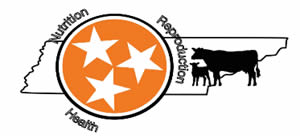

Bull Management between Breeding Seasons: Different Season, Different Problems
By: J.T. Watts and K.J. McLean

In the U.S., 53.9% of beef producers utilize a defined breeding season in either the fall or spring (Beef, 2010). Seasonal factors such as temperature and moisture have shown to impact both fertility and overall health in bulls (Llamas-Luceño, 2020). Pasture quality is generally a limiting factor for reproductive efficiency in the bull (Poppi and Mclennan, 1995). Fluctuation of nutritional plane before, during, and after the breeding season can have negative implications on semen quality, inhibiting reproductive efficiency (Harrison et al., 2021). Entering the breeding season, it is important to consider seasonal (nutrients, temperature, and environmental moisture) effects on reproductive efficiency.
Fall breeding seasons face mostly dry weather, lower temperatures, and decreases in forage quality as winter approaches (Dubbs et al. 2003). These changes can lead to environmental stress on the bull prior to and during the breeding season. Bulls utilized for fall breeding may require supplementation to meet nutritional needs and minimize body weight loss during breeding. Spring breeding seasons are subject to greater moisture and increasing temperatures; however, contrary to fall, forages have increased nutrient value (Dubbs et al. 2003). It is important to regulate supplementation at this point to prevent over-feeding leading up to the breeding season to avoid the negative effects that over-conditioning can have on reproductive efficiency and bull performance (Skinner, 1981; Harrison et al., 2021).
The bull is a critical factor in the success of a cow-calf operation. A single bull is responsible for upwards of 30 calves per estrous cycle. Seasonal differences in environmental moisture, availability of nutrients, and health can impact reproductive efficiency in bulls. For producers utilizing a dual season system, maintaining bull effectiveness is even more critical for maximizing operation productivity. It is vitally important to closely manage bulls prior to, during, and immediately following the breeding season to maximize bull health and reproductive efficiency.